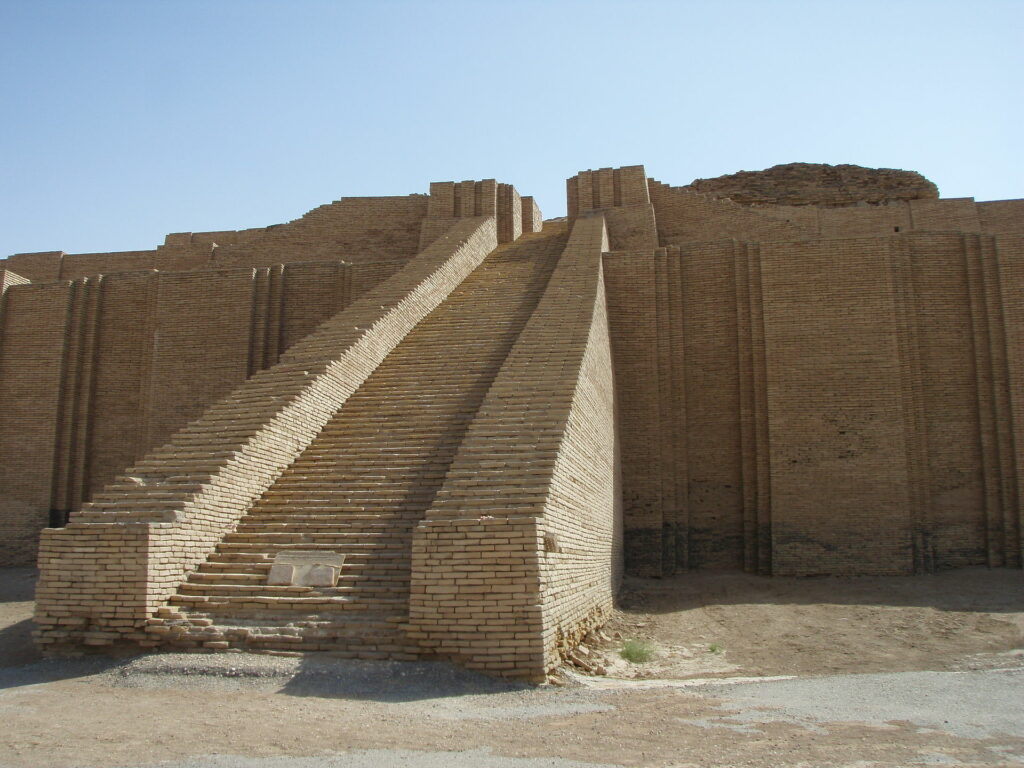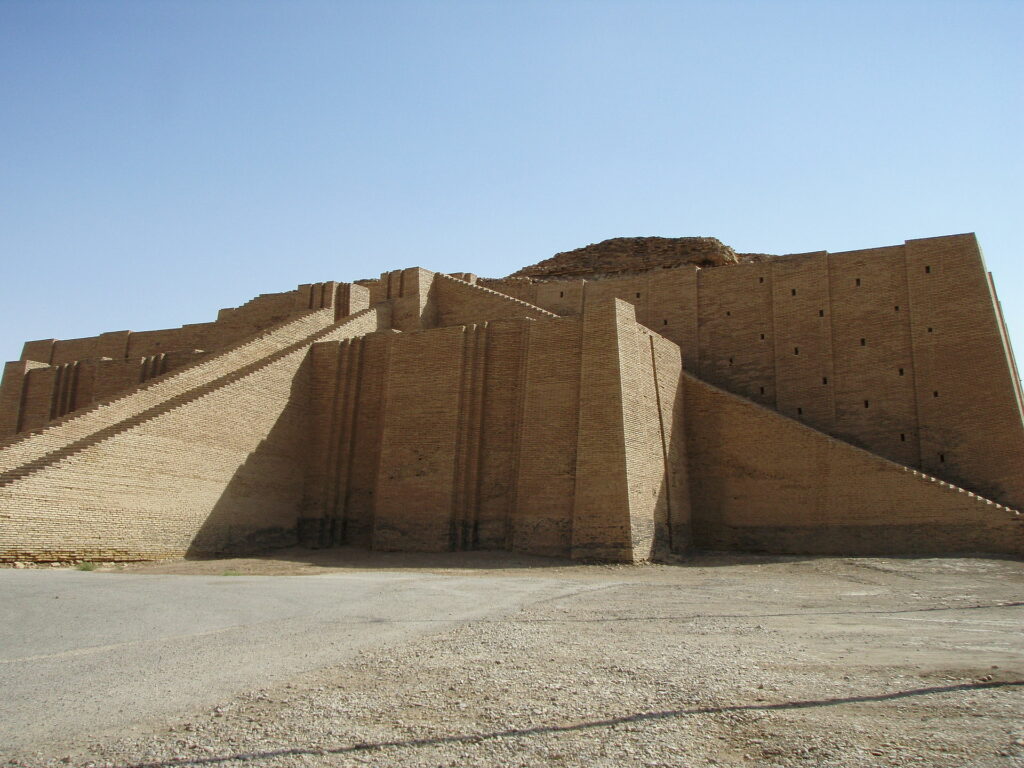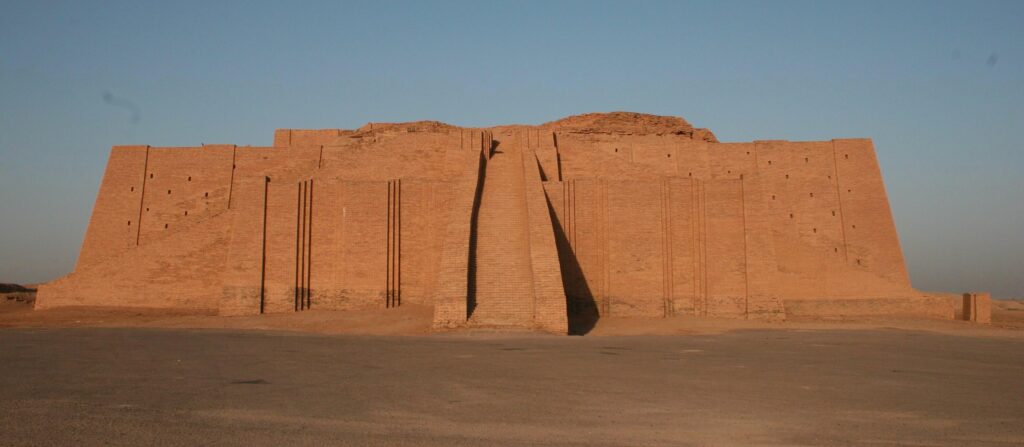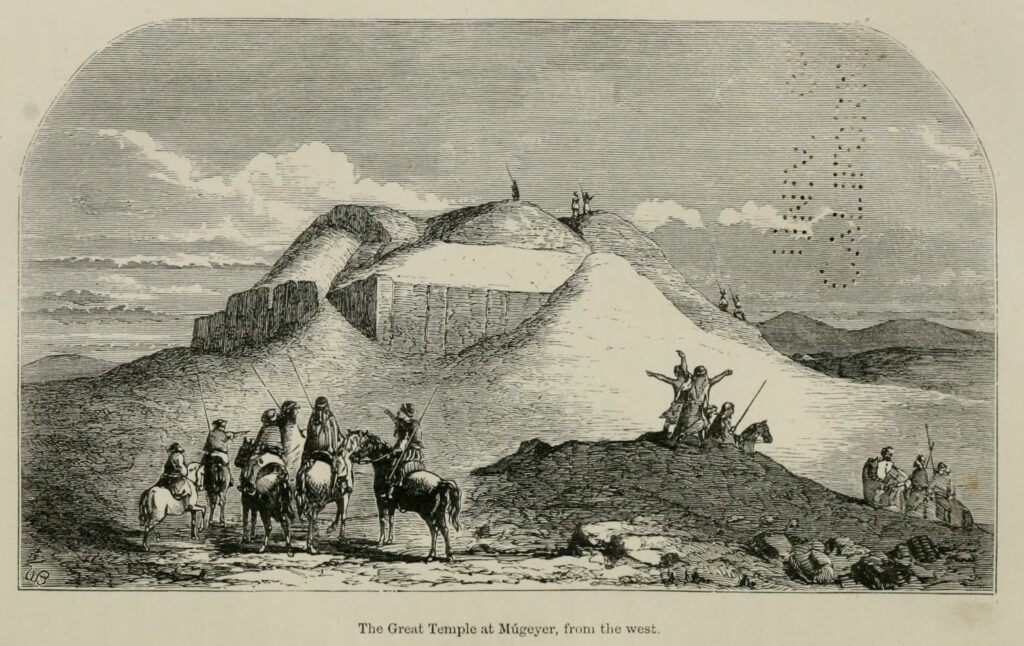In the desert of modern-day Iraq, a towering structure of baked bricks rises from the earth like a monument to the gods. The Ziggurat of Ur, one of the oldest and most impressive structures of the ancient world, remains a lasting testament to the ingenuity and impressive abilities of the Sumerian civilization.
For centuries, this massive pyramid has stood as a symbol of faith, a place of worship and pilgrimage for generations of believers, and an unexplained oddity, with a mysterious history.
For millennia, its identity was lost, and the ancient site was left dilapidated and ruined by the forces of nature and erosion. Until its modern ‘rediscovery,’ desert travelers would simply marvel from afar, likely wondering to themselves what ancient, lost civilization could have constructed such a marvel.
How was this great ziggurat constructed, and what secrets does it hold? The Ziggurat of Ur, along with its history, purpose, and enduring legacy, holds a special place in the world of ancient architecture. Answering these questions requires delving deep into the history of Mesopotamia.

The Ziggurat: A Symbol of Mesopotamia
The ziggurat is a unique architectural structure that originated in ancient Mesopotamia. It was prevalent throughout the region for centuries. Similar to the more iconic Ancient Egyptian pyramids, the ziggurat is a four-sided structure that rises to a peak, but instead of being a flat, constant rise, the sides are leveled with steps.
These towering stepped pyramids were built in this fashion to accommodate common building practices, as well as to serve as religious centers. Ziggurats were believed to connect the ancient Mesopotamian earthly realm with the gods above.
Ziggurats were an essential part of Mesopotamian religious and cultural life. They served as a symbol of the power and skill of the ancient civilizations that produced them. They can still be found across modern-day Iraq and Iran – remnants of the ancient Sumerians, Babylonians, and other civilizations.
One of the most well-known examples, the great Ziggurat of Ur, was constructed around 2100 BC in the Sumerian city – now located in southern Iraq. The awe-inspiring site survives in part to this day and is a direct link to an ancient history dating back over four millennia.

Construction of the Ziggurat Begins
Construction of the Ziggurat of Ur began in the 21st century BC under the direction of the Sumerian king Ur-Nammu during the Third Dynasty of Ur. However, the ruler likely didn’t live to see its completion. It seems that the mud-brick ziggurat was finally completed later that century by King Shulgi’s reign, the son and successor of King Ur-Nammu.
The massive ziggurat likely measured about 64 meters in length and over 30 meters in height upon being finished. Its true height is unknown, however, as only the foundations have survived to the modern day.
Ur-Nammu dedicated the Ziggurat as a shrine to the moon god Nanna, the patron deity of Ur, and a temple likely stood atop its peak. In addition to its religious significance, the structure likely played a key role in the city’s administrative, bureaucratic, and commercial affairs, drawing in crowds of people for various purposes.
Its towering height would have made it a natural gathering place for both visitors and locals, serving as a prominent landmark within the city-state. At its zenith, it was surely a spectacle to behold.
Restoration by the Neo-Babylonians
As time moved on, and civilizations rose and fell, the great Ziggurat of Ur was abandoned and ravaged by centuries of exposure to the elements. Nevertheless, it has been restored multiple times throughout history.
Its first major restoration was carried out in antiquity. King Nabonidus of the Neo-Babylonian Empire undertook the restoration in the sixth century BC and preserved most of the ancient structure, replacing only the two upper terraces.
The king also laid down new mud brick treads for the staircases, without altering their design. However, he reconstructed the top of the monument, sweeping away older ruins to suit his tastes.

Nabonidus found little of the original structure to guide him in restoring it – the entire temple complex to Nanna likely had already been lost – so he undertook the restoration in seven stages, instead of the original three.
His restoration work added a new layer of significance to the Ziggurat, as it became an important symbol of the Neo-Babylonian Empire’s power and culture. But ultimately, the forces of nature and millennia would once again leave the Ziggurat of Ur in ruin and abandonment.
Modern Excavations and Rediscovery of the Ziggurat of Ur
The Ziggurat wouldn’t be rediscovered until the mid-19th century. It wasn’t until the 1920s that the archaeologist Leonard Woolley would lead an excavation of the structure in a joint program with the British Museum and the University of Pennsylvania.
Woolley’s team uncovered the monument in its entirety, revealing the massive rectangular pyramidal structure with three levels of terraces and a height of up to 100 feet. The core of the ziggurat was discovered to be made of mudbrick and baked brick, with approximately 720,000 baked bricks laid for the lower portion alone, a stunning discovery for the time.

Along with the monument, Woolley’s team also discovered a treasure trove of ancient near eastern art, including gold daggers, carved statues, lyres, and headdresses. Still, despite Woolley’s work and these discoveries, much of the site remains unexplored, offering possibilities for future discoveries.
The ancient ziggurat underwent a small, but important, restoration under Saddam Hussein in the 1980s, but unfortunately suffered damages during the Gulf War of 1991.
Ensuring the Future of the Ziggurat
Preserving the great Ziggurat at Ur is of utmost importance for future generations to better understand and appreciate the incredible history of Ancient Mesopotamia.
As one of the earliest monumental structures of human civilization, the Ziggurat serves as a testament to the architectural and engineering prowess of such an ancient culture. And as a valuable cultural and historical heritage site, it helps us to understand the religious and political landscape of the region.
By preserving the Ziggurat of Ur, we not only honor the ancient civilization that built it, but also enrich our understanding of human history and inspire future generations by reminding them that there is still so much left in the world to explore and discover.
References
German, Senta. “Ziggurat of Ur.” Ancient Mediterranean + Europe, Khan Academy, https://www.khanacademy.org/humanities/ancient-art-civilizations/ancient-near-east1/x7e914f5b:neo-sumerian-ur-iii/a/ziggurat-of-ur.
Truman, Geena. “Iraq’s Answer to the Pyramids.” BBC Travel, BBC, 23 Aug. 2022, https://www.bbc.com/travel/article/20220822-the-ziggurat-of-ur-iraqs-answer-to-the-pyramids.
Woolley, C. Leonard. “The Ziggurat of Ur.” The Museum Journal XV, no. 2 (June, 1924): 107-114. Accessed March 21, 2023. https://www.penn.museum/sites/journal/1235/.

